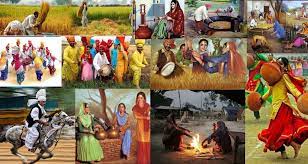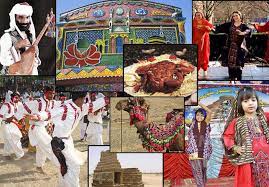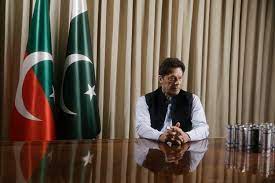Culture may be defined as all of the approaches of life including arts, ideals, and establishments of a population that are passed down from era to technology. Subculture has been called "the manner of existence for a whole society." As such, it consists of codes of manners, dress, language, faith, rituals, and art.
Examples of cultures include western culture, youth culture, counterculture, and high culture.

Importance of culture.
In addition to its intrinsic price, culture affords essential social and monetary blessings. With stepped forward studying and health, accelerated tolerance, and possibilities to come collectively with others, lifestyle enhances our great lifestyles and increases typical well-being for both people and communities.
Inside the humanities, one feels subculture as an attribute of the person who has been the diploma to which they've cultivated a selected level of class inside the arts, sciences, schooling, or manners. The level of cultural sophistication has additionally sometimes been used to differentiate civilizations from much less complicated societies. Such hierarchical views on the way of life are also found in elegance-primarily based on differences between a high culture of the social elite and a low way of life, famous lifestyle, or folks’ subculture of the decreased lessons, prominent through the stratified access to cultural capital. In not unusual parlance, way of life is frequently used to refer particularly to the symbolic markers used by ethnic groups to differentiate themselves visibly from every other which includes frame modification, clothing, or jewelry. The mass way of life refers to the industrially produced and mass-mediated kinds of consumer tradition that emerged in the 20th century. Some faculties of philosophy, which includes Marxism and crucial principle, have argued that tradition is frequently used politically as a device of the elites to govern the proletariat and create a fake recognition. Such views are commonplace in the field of cultural research. Within the wider social sciences, the theoretical attitude of cultural materialism holds that human symbolic subculture arises from the material conditions of human life, as humans create the situations for physical survival, and that the premise of lifestyle is determined by advanced biological inclinations.

Culture and Customs of Pakistan.
Pakistan has 4 seasons, despite the summer season is the longest season with a temperature of a hundred and twenty stages Fahrenheit (45 degrees Celsius) and better. The summer season months preserve from overdue April and early September. Whereas wintry weather happens from November to past due January until spring presents a transition between a departing winter and a gradually warming summer. Summer days, except in mountainous regions inside the north and to the west, are very lengthy and warm till the rainy season unit in from past due June to past due August. Pakistan is regarded for a huge variety of greens and culmination, also established upon seasons and various quantities of rain. The maximum of the rains gathers during wet seasons and in January while two principal seasonal harvests need the maximum. Wheat, grams (or chickpeas), peanuts, and mustard are referred to as the Khareef vegetation ̶ are sown in autumn to be harvested in early April, even as corn, sugar cane, millet, and a variety of beans called Rabbi vegetation ̶ grown at some stage in the summer times.
Winters in Pakistan are commonly enormously sunny however nights in the apparent and cakes can get immensely cold with fog engulfing the surroundings until the past due morning whilst the sun burns it out. Pakistan’s spring is a substitute for short but flowery and aromatic, additionally, the rainy season also arrives inside the spring with lush greenery across the plains until the fall turns the terrain brown. The iciness season is cold, dusty, and dry; humans regularly bitch of cold arctic winds coming from Siberia and the Himalayas. The northern passes in Chitral, Gilgit, Hunza, Baltistan, Kagan, Swat, Dir, and Kurram emerge as snowbound.

People:
Pakistanis have descended from the ancient Indo-European communities who either lived in the Indus region since time immemorial or ventured in as invaders and immigrants Pakistanis resemble other North Indian population groups in their appearance cultures, and customs, they're also similar to their West Asian counterparts in many ways. Considering that the spread of Islam from the 7th century was accompanied by centuries of Muslim rule, West Asia emerged because of the dominant aspect of Pakistani demography. Interestingly, many Pakistanis- specifically the Muslim organizations- see their genealogies from Persia, important Asia, and the Middle East. At the same time, there are Muslims in Karachi and the coastal regions of Baluchistan whose ancestors came from Africa.
Whereas faith history and ecology generally unify Pakistanis as a homogeneous countrywide organization their linguistic and nearby roots decide their perspective ethnicities. As a result, Pakistan’s population is divided into five or six foremost ethnic corporations that are not constrained to their unique territories. For example, the Punjabi ethnic group - the biggest of its type in Pakistan is spread all around the state. It makes up 60 % of the entire populace.
The Sindhis - the second largest ethnic institution accounting for 20 percent of Pakistan’s population - live frequently in rural Sindh and are looked at as if they would be the descendants of Dravidians alongside a few Persian and Arab history. They stay in decreased Pakistan, which for the reason that 1947, has been the host to some other predominantly city ethnic groups, referred to as Muhajireen (immigrants) who account for 5 to six percent of the kingdom's population.

Government.
Pakistan is a federation with four provinces and some federally administrated tribal and border regions. Constitutionally named the Islamic Republic of Pakistan, the federation’s capital is Islamabad _a new metropolis. A president heads the country, a parliamentary gadget is headed with the aid of an elected high minister, and the cupboard runs the government. The parliament is divided into an upper residence The Senate and the national meeting, or the decreased residence. The Senate has an equal illustration from all of the four provinces and the capital territory; while the countrywide assembly is elected via generic suffrage from all of the four provinces and the tribal regions. And 33 percent of its seats are reserved for ladies. Given all of the important amendments made for the reason that the military take over through standard Pervez Musharraf in 1999, Pakistan's constitution allocates crucial powers to the president and stipulates sturdy valuable authorities even though the supreme court decides on contentious Constitutional matters.




You must be logged in to post a comment.